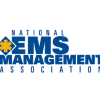If your operations rely on paper mileage logs, maintenance scheduling based upon check engine lights and safety features that stop at seat belts, then it’s time to take your fleet to the next level. Download the EMS1 fleet management products buying guide to learn key steps for product selection, purchasing and implementation to turn your vehicle data into valuable operational analytics.
This article originally appeared in the May newsletter of the National EMS Management Association and is republished here with permission.
With increased costs and healthcare reimbursements from Medicaid and Medicare remaining relatively stagnant, many EMS fleets continue to age as the cost of replacement is put on hold. This is surely having an impact on maintenance considerations.
Every EMS unit poses the challenge of determining when it is no longer fiscally wise to continue maintaining the vehicle. With the current economic challenges facing EMS agencies, stretching the life cycle of fleet units may become an everyday event.
Two major reasons ambulances fail in long run
There are two major reasons vehicles fail in the long run. One being fatigue, and the other being corrosion.
Fatigue is the general wear and tear on a vehicle’s parts until the parts are worn enough to no longer perform the job intended. Some parts have built-in indicators for when they are becoming worn, such as wear bars on tires. However, many of the costly items do not have such easily seen indicators.
The other major factor causing vehicles to fail is corrosion. Steel rusts and aluminum oxidizes. Fighting corrosion at the beginning of the vehicle’s expected life cycle will help more in keeping the vehicle viable for longer than trying to catch corrosion once it has started.
Preventative fleet maintenance
Preventative maintenance is an obvious key to wringing as much life as possible from each unit. It also assists in preventing costly breakdowns. Strict inspection practices, such as driver pre-shift inspections and preventative maintenance checklist inspections are useful tools. Careful analysis of cost-per-mile per vehicle will also aid in determining which vehicle(s) should be next for replacement.
Decreasing the interval between preventative maintenance performance will help identify issues early. Make sure you talk with the mechanics working on your vehicles to let them know the plan. A good mechanic can help guide you on what needs to be done to keep a vehicle longer.
Each preventative maintenance inspection should be performed following a written guide to make sure that all the critical parts are checked at various intervals. Having the vehicle’s oil and fluids tested on a regular basis as part of your maintenance program will furnish information on the internal wear and tear, particularly in the power unit.
Use of synthetic oil will more than pay for its higher cost in the long-term return on investment. Check for signs of leaks. Not every leak is an immediate cause for concern, but they need to be watched to make sure that undue wear is prevented. Make sure that in addition to wear and tear, your maintenance program is also looking for signs of corrosion.
Early rust detection
Maintaining the drive train of a vehicle can be costly and wasteful if you let the chassis rot out from under it. There are several things that should be inspected and addressed during preventative maintenance.
Door hinges are notorious for rust. If caught early and replaced, hinge rust can be much less costly than a sprung door that also catches door or fender metal.
Make sure to have the mechanic also examine the chassis for signs of corrosion. Leaf spring shackles, shocks and struts, break lines, and other exposed areas are exceptionally prone to corrosion. The frame itself should be examined as well on a regular basis.
To help prevent under carriage corrosion, there are several different under coatings that can be applied. As with most preventative applications, the earlier these are applied in the life cycle of the vehicle, the better.
Do you have a checklist that your internal or external preventative maintenance provider hands back to you showing each of the areas they checked and what measure was taken if an area failed to pass inspection?
Finding ambulance parts
As vehicles age, finding parts also becomes challenging. Developing connections with other fleets of similar vehicles has the advantage of finding parts as vehicles age. Checking in with your ambulance manufacturer can also lead to finding parts.
Also think about parts as you do start to retire some vehicles. You may retire a vehicle because of wear and tear with one part but other parts may still be good condition and may be a good alternative as spare parts for other vehicles in the fleet.
Centralized database
Part of a strong preventative maintenance program is having a central place for documentation of all the vehicles issues and maintenance that has been completed. In today’s time, this should be done electronically, even if you use a home-grown program using Google Docs or using a formal preventative maintenance web-based program.
Create a documentation trail that you can follow and one that allows both the operations side as well as the mechanics to enter information.
Fleet maintenance planning and communication
Maintaining an aging fleet is certainly a challenge. With planning and good communication with your mechanics, an aggressive preventative maintenance program and networking for parts, the maintenance of an aging fleet can be accomplished.
This article was originally posted Sept. 12, 2017. It has been updated.



